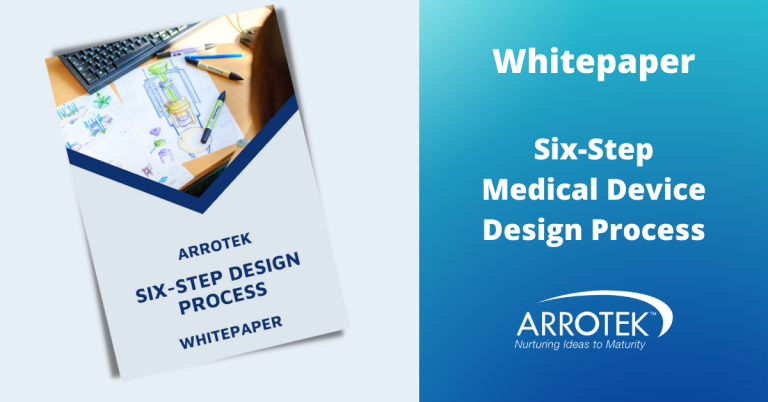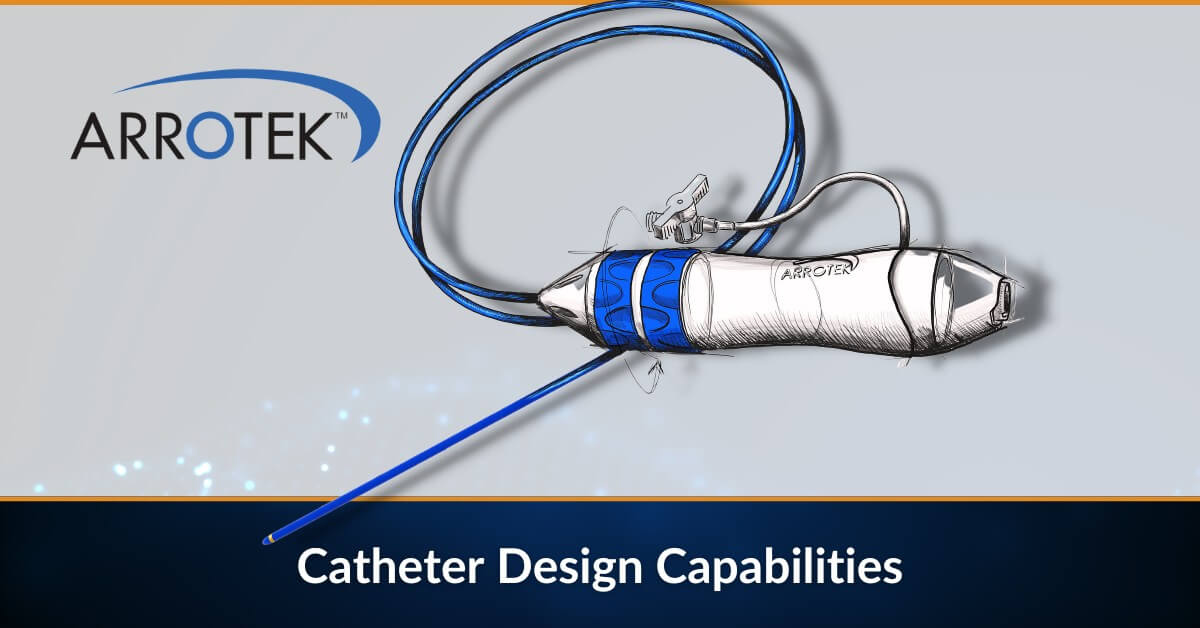Effective catheter design and development are essential to successfully bring your idea for a new device to market. From the earliest stages of concept development through to scaled-up manufacturing, it is a complex process with a range of considerations and potential challenges that can impact success.
However, with the right approach and expertise, there are also opportunities in a range of areas, from getting the design right early in the process to minimizing manufacturing costs to getting your product to market in the shortest possible timeframe.
Headline Considerations
- The intended use of your new catheter device – it is important to develop a clear intended use definition for your new catheter device as early as possible, as this will define the direction of the design and development process. Defining the intended use of your new catheter device means describing its purpose and what it does. It is also essential to define the indications for use. This involves outlining when and where the catheter will be used.
- Performance considerations – there is a wide range of features and characteristics that might apply to your new catheter device, but the main performance considerations include outer diameter profile (which influences access trauma, among other things), flexibility, kink resistance, steerability, torque transfer, push strength, and lubricity.
- DFM and DFA – DFM is Design for Manufacturing, and DFA is Design for Assembly. They are two essential design considerations that take into account the stages after you finalize the catheter design. The aim is to ensure the device can be manufactured and assembled at scale and within a reasonable cost.
- Regulatory process – your new catheter device will have to be approved by the regulators in the markets you are targeting. The best time to start thinking about and planning for regulatory approval is at the start of the catheter design process. Therefore, it should be a design consideration from day one.
Working With the Right Partner
Designing new and complex catheters that push the boundaries of innovation requires in-depth knowledge of catheter technologies, materials, and performance. It also requires experience and knowledge of the characteristics that influence catheter design, manufacturing and assembly processes, regulatory requirements, and the overall requirements to bring an idea from concept stage through to market launch.
Therefore, it is essential that you partner with a medical device design company that has experience and a proven track record of designing and developing innovative catheter devices.
Speak to an Engineer
To speak to one of our engineers about your idea for a new catheter device, please get in touch.
Understanding the Makeup of a Reinforced Catheter
A reinforced catheter design typically has three layers:
- The inner layer or shaft
- The reinforcing layer
- An outer layer
Advanced catheter designs may also have a fourth layer, such as an additional reinforcing layer to add performance benefits in ultra-thin-walled catheters.
Catheter Design – Inner Layer
The inner layer of your catheter design will depend on the construction characteristics and performance properties. As mentioned above, these considerations should reflect the intended use of your new catheter device.
Questions you need to ask may include whether or not low-profile walls are an essential design characteristic, will the catheter be used for high-pressure applications, or is low friction important?
Catheter Inner Layer Performance Characteristics
- Steerability, flexibility, and kink resistance – the requirement for these performance characteristics will largely depend on the vessel anatomy the catheter is being designed to pass through. For the most tortuous applications, maintaining unsupported lumen patency will be a key catheter design consideration, so there will be significant focus on flexibility, steerability, and ensuring kink resistance.
- Atraumatic access requirements – atraumatic access is a key requirement for many modern catheter applications, including in catheters designed for coronary interventions. In these applications, the inner layer of your catheter needs to have low-profile walls to less than 0.1mm. This helps reduce the outer diameter of the catheter, minimizing trauma at the access point.
- Compression and tensile strength – if your catheter will be used in applications where maintaining the structural strength of the inner layer is a key consideration, reinforcement of the shaft will be an essential component of the catheter’s design.
- Torque control – this will again depend on the application. For example, for long catheters designed for use in tortuous vessel anatomies, 1:1 torque control might be a key requirement, where the tip of the catheter is replicated 1:1 on a screen in front of the user, with no lag.
You will also need to consider any performance requirements that are in competition with another, as solving one might negatively impact the effectiveness of the catheter in other ways.
Catheter Inner Layer Materials
The material used in the inner layer design of your new catheter device will significantly impact the performance. Some of the more common materials used in catheter inner layer design are outlined below.
PTFE (polytetrafluoroethylene)
PTFE is a material that is commonly used in vascular catheters as well as a range of other catheters. It offers several beneficial characteristics that include:
- Chemically inert
- Low coefficient of friction – lower than any other polymer
- High lubricity
- Suitable for ultra-thin-walled catheters
There are a few downsides too. Firstly, PTFE isn’t suitable for traditional methods of extrusion, so it typically has to be hand-assembled. This is an important DFA consideration in the overall catheter design process. Also, Gamma and E-beam sterilization techniques are not suitable, so sterilization is usually achieved through EtO or autoclave methods.
Polyamide (Pebax)
Polyurethane (PU) is a commonly used polymer for a range of catheter applications, including vascular catheters. There is a range of varieties available, such as polyester. Another is Polyamide (Nylon) or, more specifically, Pebax. Pebax is a modified Polyamide that has enhanced elasticity. This material offers a range of benefits:
- Good levels of stiffness and strength for applications like balloon catheters
- Flexible and soft
- Suitable for ultra-thin-walled catheters
There are DFM and DFA considerations to take into account when using polyamides as the material for the catheter shaft. This includes the fact that hand assembly will be necessary for multi-durometer processes.
It’s also worth mentioning another PU alternative that is used in a wide range of applications – Polycarbonate-based PU. It is often the material of choice for catheter devices designed for use in the body for long periods of time, as it offers high levels of biostability.
HDPE (high-density polyethylene)
HDPE can be used as a catheter shaft or an inner lumen. The big benefit is the manufacturing options that are available, including extrusion for single durometer applications. In terms of the material characteristics, you do lose some benefits compared to other options.
For example, HDPE has a higher coefficient of friction than PTFE, and it is harder than PTFE. HDPE still has good lubricity, though, and, unlike PTFE, Gamma and E-beam sterilization is possible.
FEP (fluorinated ethylene propylene)
FEP is a material used in applications like introducer sheaths, guiding catheters, delivery systems, and other complex devices. Compared to PTFE, FEP is more flexible, and it is more suitable for extrusion processes. It also has a lower coefficient of friction than Pebax and HDPE. It has good lubricity too.
Other Options
Other materials used for the inner layer of catheters include:
- ETFE (ethylene tetrafluoroethylene) – ETFE is most commonly used in intravenous catheters. It is strong and stiff and has good lubricity, although not as good as PTFE.
- PEEK (polyether ether-ketone) – PEEK is a material used in delivery systems, ablation catheters, and other complex devices. It is suitable for thin-walled applications, and it is strong, flexible, and has a high-temperature tolerance.
Arrotek has extensive experience working will all types of specialist materials to suit specific clinical requirements.
Speak to an Engineer
To speak to one of our engineers about your idea for a new catheter device, please get in touch.
Catheter Design – Reinforcing Layer
The reinforcing layer enables the design and development of more complex catheters, including devices that have ultra-thin walls. There are two main methods of designing the reinforcing layer of a catheter device:
- Braid reinforcement
- Coil reinforcement
Braid Reinforcement
The primary benefit of braid reinforcement in a catheter device is improved torque control, making the catheter easier to manipulate and maneuver within the body. The type of braid reinforcement that is used depends on the device and the application, as there are multiple customization options. This gives catheter design engineers a lot of scope for innovation.
The configuration of the braid can be customized, for example, as well as the size and density of the wires. There are multiple material options as well, including Nitinol. Nitinol is popular in various applications as it increases the kink resistance of the catheter.
Coil Reinforcement
Coil reinforcement is primarily used to increase kink resistance, which helps to prevent the catheter from collapsing when being manoeuvred, particularly in tortuous vessel anatomies. In some applications, coil reinforcement can also help improve the pushability of the device.
The design of the coil reinforcement will depend on the device. Some of the possible options include:
- Variable pitch coiling along the length of the shaft
- Braid over coil reinforcement
- Braid to coil transitions
- Material selection options for the coil reinforcement
Catheter Design – Outer Layer
The main design considerations for the outer layer of a catheter device are pushability, stiffness, and yield. The level of adhesion between the outer layer and those below is also important as delamination, or loss of adhesion, will severely impact performance.
All these considerations affect the choice of materials available for the outer layer of the catheter.
Additional Considerations in Catheter Design
The full range of considerations in catheter design can’t be covered in a single article, although many of the main points are discussed above. Some others that are worth highlighting include:
- How the catheter is operated by the user and how the handle attaches to the shaft.
- The design of welds and pull wires.
- The preferred or required sterilization method.
- Target manufacturing costs.
- Product life-cycle and further development plans.
- Anticipated manufacturing volumes.
The Right Expertise
At Arrotek, we have extensive experience in catheter design, including the design of thin-walled catheters and other advanced catheter technologies. We have the expertise to ensure the design and development process runs smoothly, and to ensure the product that is ultimately developed meets your requirements. This will save you time and money, as well as helping to get your product to market faster.
To speak to one of our engineers about your idea for a new catheter device, or if you have a query about the catheter design process, contact us today.





